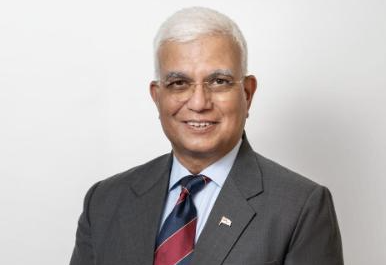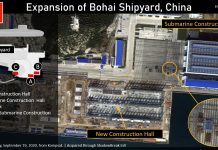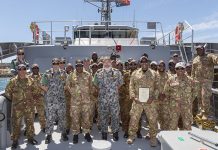
The following is the address of Rear Admiral Sudarshan Shrikhande IN (retired)* to ANI’s 2024 Goldrick Seminar.
My thanks to the President and the team of the ANI for this opportunity. I spoke at the 2022 Conference which was also the last time I met Rear Admiral Goldrick who I met for the first time in 1996 during Exercise RIMPAC and from the time I was the defence adviser here in Canberra from 2004 to 2008, always valued him as a sailor, scholar educator and for me also a friend. Through his papers, articles, books and lectures, he will always be a beneficial presence to thinking on maritime strategy and I personally benefited through our conversations and emails on a host of issues where his grasp, nuanced views and cultural understanding and empathy were so readily apparent.
Disclaimer: The views I present are my own and do not necessarily represent those of ANCORS or any Indian organisation I have been affiliated with.
So, on to the frame of reference that Commodore Peter Leavy suggested. As James might have said there are “No Easy Answers…” about India’s trajectory.
I may say that India’s national outlook has changed substantially in the last few decades, but especially so in the last few years. Internally, governments have been trying to expand the economy, raise standards of living to meet the expectation of 1.4 billion people, that is almost 55 “Australias” worth of people in an area that is about 42% of this continental nation. The road to prosperity and economic security is rough, twisty, and difficult and with unpredictable oncoming traffic! Yet, the creditable aspect of such effort is that it is a journey where democracy provides much of the traffic signs guiding India even if not the oncoming traffic. Within the changing and evolving national outlook, India’s security outlook is also considerably different from what it was say, two decades back. A few strands of this change are:
First, A greater willingness and pro-activeness for partnerships that work to mutual benefit.
Second, a stress on “strategic autonomy” which is taken now to mean a shift from the earlier “non-alignment” to multi-alignment. India has partnerships, and some of them are strong and getting stronger. Australia is most certainly one of such partners. These are not alliances based on treaties such as you have like ANZUS or now, AUKUS or even “Five Eyes.”
Third, an increased stress on “maritime India” the label given to a range of developmental programmes that recognise and further the centrality of the oceans, particularly the Indian Ocean region and the larger Indo-Pacific region to India’s prosperity, security and role on the global commons.
India’s maritime needs have been high for several decades, but its maritime competitiveness has been much lower than needed. That is not so different from the thinking in Australia. Just like so many policy papers I have been reading as part of my research at ANCORS, both our countries fall short in several measures of maritime competitiveness. These include several matters of ports, ports connectivity, Indian-owned owned shipping, national flag ships, and very significantly shortfalls in shipbuilding.
Briefly, the policy decisions being implemented across public and private sectors are for ports, shipbuilding and even ship ownership (we have a government owned Shipping Corporation of India which could be privatised) hinterland connectivity.
One major document is Maritime India Vision 2030 published in 2021. The title Maritime India used as a label and slogan from 2016, harks back to Japan’s 1885 plan for Kaikoku Nippon, or “Maritime Japan.” Vision 2030 in addition covers inland waterways, ship repairs, a sustainable and green maritime sector, maritime research, and training as well as enhanced global maritime cooperation.
In tandem are two programmes, the SAGARMALA, or string of national ports for upgrading them, for new ports, but also for improving efficiencies. The second is SAGAR, or Security and Growth for all in the Region. The acronym also means seas and oceans in several Indian languages. SAGAR is the continuation of a programme several decades old but with renewed focus, energy and backing to enhance mutual prosperity and security in the IOR.
In times of crises, India, like Australia would need to depend on more assurance of ships that we can control for our needs in terms of ownership, national flag as well as have some leverage over flags of convenience and in the ability to man these ships. China and Philippines have higher numbers at sea than India. China accounts for nearly 30% of crewing, and India about 10%. Proportionately, Chinese crew serve in mainly Chinese flagged vessels whereas Indians are found globally as are Filipinos. About 40% of Indian seafarers are officers and 60% ratings.
The Indian Navy has been conscious and persistent in its urging over decades for increased maritime awareness, the maritime potential and the need to push maritime growth as well as sea power that serves India’s interest, not the least of which is to see how multi-lateral and bilateral relationships and cooperation could further both. Shipbuilding and ship repair have become focus areas with ministry of defence shipyards filling their order books with merchant vessels of different types to better use their infrastructure. Likewise, newer private sector yards or older yards under better hands are setting to build next generation ships. One hopes that India will develop attributes of persistence and determination in supporting a slew of initiatives even through difficult beginnings because we need to develop resilience for tougher times that may not end quickly. In many ways, what you are thinking and doing here in Australia or indeed the theme of this and previous seminars are similar.
Australia is, of course girt by the sea. India is girt by the Himalayas for much of our borders but also with very interesting neighbours, China and Pakistan. We are also girt by the sea. It might be apt to say here that as a people, Indians are largely girt by optimism as well, although this is not to say that that things are fine overall. There is, in a simpler way, greater satisfaction today than one felt yesterday from a generalised perspective. Yet, there are big problems to be solved in a nation of such complexity as India is.
In terms of security and strategy, therefore, we have continental as well as maritime strategical conundrums to contend with in a way that does not exist for Australia, Japan or a virtual island like the US. And, yet, as something Julian Corbett would have recognised, many aspects of decisions will still be linked to his major rationale that went, “Since men live upon the land and not on the sea…” all nations are likely to have continental conundrums to varying degrees in several aspects of deterrence until deterrence is tested to point of a break and conflict is nigh.
For India with tense and troubled borders, issues of continental strategy are ever-present, with a touchy-feely character along long, difficult, manned borders of which 4000 plus kilometres are with China alone, In an obliquely analogous way, we have figurative and sometimes literal versions of the line of trenches that once stretched from the Belgian coast to the Swiss border in the First World War.
Here, we could touch upon a major complexity. That Western trench line for the Allies (which at that time consisted of the Australian as well as Indian troops, what if Germany was not the only adversary? (Since Austria-Hungary was involved mainly elsewhere.) India must strategically and operationally take into account the close partnership between China and Pakistan that stretches across the DIME (Diplomatic, Informational, Military and Economic) framework. Now, of course, Beijing and Islamabad are not allied, but they are closer partners than can be in some alliances. New Delhi cannot quite be indifferent to this partnership.
I have written earlier that over some years now, China not only is a friend and partner of Pakistan, but is now also a maritime neighbour of India. The situation for India with this potential threat is not unlike what Canberra thinks of Chinese influence and the likelihood of bases around Australia including further into the Pacific. Now, of course the response from these two countries is that there is no evidence of any PLAN naval bases around India’s periphery including at Gwadar. This may be strictly correct, but any military planner knows that tactically and operationally, piers and jetties or runways are agnostic about whether berthing hawsers came from warships or merchantmen or research and space tracking ships and likewise, runways do not automatically sense whether the aircraft wheels that slam in at touch down are of a military or civilian flight. China’s benign influence and inroads into the IOR in terms of aid, investments, in the BRI (which India has always declined to be a part of), its growing military hardware sales and grants, military training, and politico-diplomatic influence with individual regimes in several countries around the IOR and in Africa as well are matters which India is concerned about. Secondly, it does not take long to turn the “benign” into something that is less benign or malign.
Finally, on China in the IOR, we need to better understand that Chinese seapower is as much resident in its “fort” as it is in its fleet. If this aspect is increasingly recognised in the western pacific, it would be prudent to see major portions of its architecture, especially of its “fort” to be oriented or reoriented towards the IOR to present credible capability even if it does not deploy its surface fleet including CBGs into the IOR. In my opinion, no armed forces in the world have done as much to forge five dimensions of warfare, the sea, air, land, cyber and space better than has the PRC and the PLA.
India is responding by doing some of the same in terms of multi-dimensionality and is reorganising into greater jointness albeit at a much slower pace and with internal resistance until lately for such reorganisation, perhaps some retooling and changed thinking.
In closing, I will mention the Quad about which I had written recently for the ANI. Firstly, it is not an Asian NATO; it is not related to AUKUS. Unlike some commentators in India, AUKUS could have existed or been absent without the Quad. Secondly, the four members of this dialogue are working on a wide range of human goods and on various aspects of furthering and sustaining the FOIP. Thirdly, there already are six strong bilateral relationships including several years of exercising together in multi-dimensions, but especially in the naval sphere. These six bi-laterals reinforce the Malabar quartet which has the same four of us that form the Quad. This grouping could and will provide alternatives to the BRI but all this requires much more effort and funding. What we can be confident about is that it will bring more lasting value across the Indo-Pacific than Beijing can bring in the long run.
In all this there is quite a bit that Australia and India can do bilaterally, especially in comprehensive maritime security terms while setting it in a multilateral environment. As Vice Admiral Mark Hammond said this morning quoting an African proverb, we can go alone somewhere quickly, but together we can go farther.
*Rear Admiral Sudarshan Shrikhande is currently a Maitri Fellow at the University of Wollongong’s Australian National Centre for Ocean Resources and Security (ANCORS).



